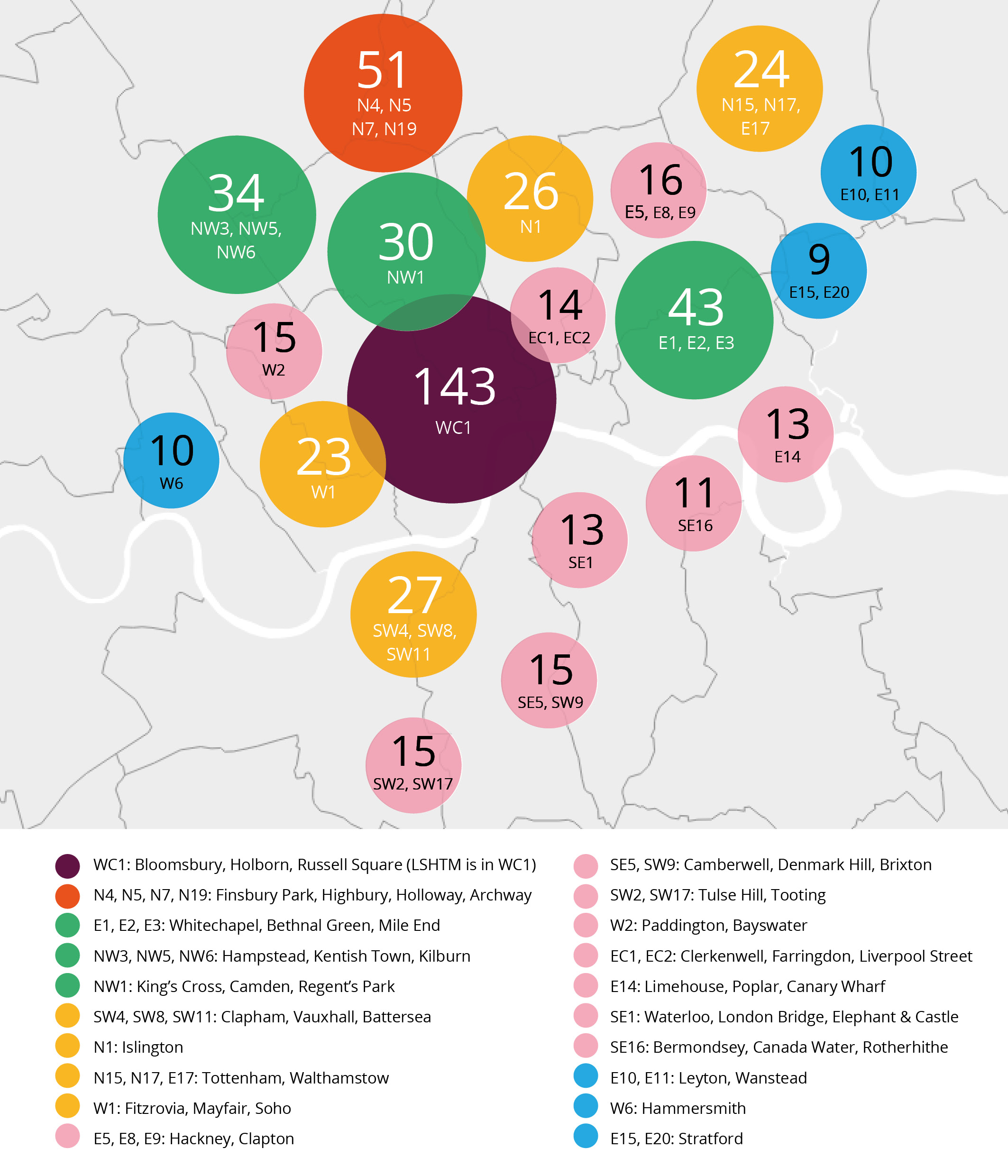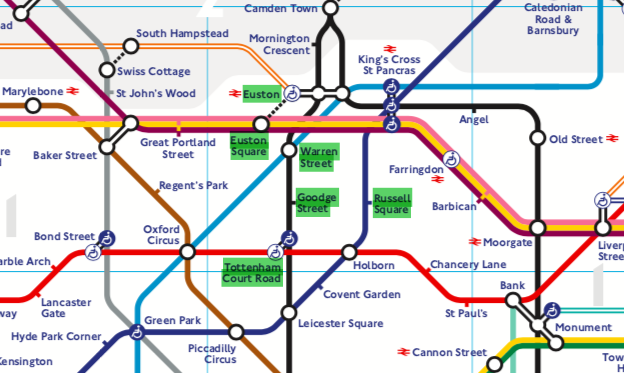A quick guide to accommodation options in London
Broadly speaking, there are two main categories of accommodation in London:
- Student halls of residence
- Private housing
1. Student halls of residence
Student halls of residence can be separated into three types:
- University of London Intercollegiate Halls, with rooms allocated to the different member institutions of the University of London, of which LSHTM is one (the rooms allocated to LSHTM are within walking distance to the School).
- University of London managed properties, such as the Gower Street apartments (these are more expensive but located right next to LSHTM)
- Independent halls, either privately-owned or run as charities (located all around London)
2. Private housing
Private housing is the most popular choice for LSHTM students due to the limited number of available rooms in Intercollegiate Halls and rental prices being generally cheaper than in student halls of residence.
Students generally look into renting an individual room in a shared house or flat, or renting an entire property with a group of students. You must be in London to find private accommodation - you should not pay for a room before you view the property in person (with the exception of properties listed in the University of London Housing Services Property Platform, although you are still encouraged to view the room to make sure you like it).
LSHTM subscribes to the University of London Housing Services (ULHS) which offer a number of services to help students who are looking for accommodation in London, such as a housing database and Property Platform, a contract-checking service, flat hunting events and Flatmate Finder Facebook group. Additionally, do check out their Private Housing Guide which has lots of useful information about finding and securing private accommodation, and their Contract Checking Guide for tips on what to look out for in your contract before you sign it.
Where do our students live?
This map shows the number of LSHTM students living in the most popular postcode areas in London for 2023-24 students.
Further information and general things to consider
- Do you want to live with other people?
If so, you should focus on a flatshare in private accommodation. Some halls of residence offer rooms in apartment-type accommodation, or you can have a single/double room with a shared kitchen and shared communal spaces.
- Do you want to live alone?
Some halls of residence offer studio-flat type accommodation, with a small kitchenette and en-suite bathroom. Alternatively, a privately-rented studio flat (a small flat which combines living room, bedroom and kitchen into a single room) could be an option, although this is relatively expensive.
- Decide your budget
Depending on what you are used to, London can seem moderately or hugely expensive so you should be realistic about what you can afford. Household bills (gas, electricity, etc.) are generally not included in the rental price, unless specifically stated.
Typical private rents for a room in a shared 3-bedroom property (excluding Central London) start at £500 per month (the average being £700+ per month, though prices can vary significantly depending on property type, size and location). A single room in an inexpensive hall of residence starts at around £200 per week (or approximately £870 per month).
As a general rule, living further from the centre will be cheaper (including factoring in travel costs). Sharing properties with more people (e.g. 4 or 5-bedroom properties) also tends to be cheaper. It is common for properties to have the living room transformed into a bedroom, to bring individual rental prices down, but that means of course you wouldn’t have access to a living space.
This student rent calculator is a good resource to help you determine your budget.
Tip: rents are usually quoted as either price per week (ppw) or price per calendar month (pcm). To calculate the monthly rental cost when prices are advertised per week: multiply the weekly rent by 52 (the number of weeks in a year) and then divide by 12 (the number of months in a year).
- What accommodation does LSHTM provide?
LSHTM does not have its own student accommodation, however we do have a limited allocation of rooms in the University of London Intercollegiate Halls, offering a range of different options – catered and self-catered accommodation, en-suite rooms, studios and single bedrooms.
- Where to live?
If you’re not familiar with London it can be hard to know where to start your search. Take a look at our area guide and familiarise yourself with London’s public transport network. Bear in mind that most Londoners don’t live in zone 1 – it’s very normal to live in zone 2 and beyond.
LSHTM is located in Bloomsbury, Central London. The following tube stations are all within walking distance to the School, so looking at accommodation near tube stations in zones 2 to 4 (or beyond depending on budget) that are serviced by the relevant tube lines would ensure a relatively easy commute to the School:
- Goodge Street (Northern line) = 350 metres
- Russell Square (Piccadilly line) = 550 m
- Euston Square (Circle, Hammersmith & City, Metropolitan lines) = 600 m
- Tottenham Court Road (Central and Northern lines) = 600 m
- Warren Street (Victoria and Northern lines) = 850 m
- Euston (Victoria and Northern lines) = 900 m
The above distances are in relation to the LSHTMs main building in Keppel Street.
The bus lines 24, 29, 73 and 390 all stop near LSHTM’s main Keppel Street building (Goodge Street station stop). Several other lines also stop nearby (1, 8, 14, 19, 38, 55, 59, 68, 91, 98, 134, 168, 176 and 188). Check out the TfL website for bus routes and maps.
- Is there anything I should have with me when looking for accommodation?
Before you leave for the UK:
- Sufficient funds to pay your deposit (up to 5 weeks' rent) and the first month’s rent
- References from previous landlords (in English) - not essential, but a good idea
- Bank statements (again not essential, but a good idea)
Once you are in London:
- Tube map (available at all underground stations, as an app, and on the TfL website)
- London map (e.g. Google maps, Citymapper app)
- Oyster card (see the Transport section)
- UK mobile (cell) phone
- Internet access (many cafes offer free Wi-Fi)

